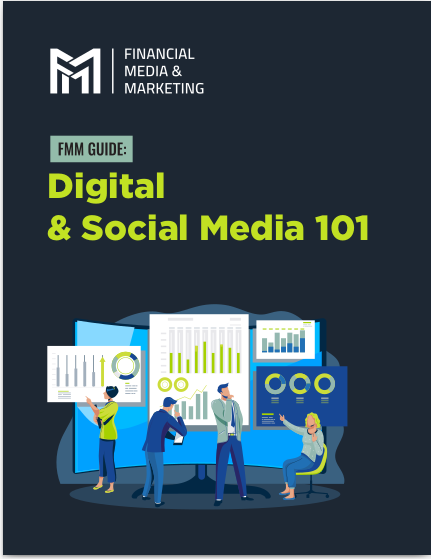Key Takeaways
- Highlighting your unique value proposition, credentials, and experience is essential for creating a compelling financial planner bio.
- Personalizing your bio and including a clear call to action can significantly enhance lead conversion and client engagement.
How to Write a Compelling Financial Planner Bio That Converts Leads into Clients
A well-crafted financial planner bio is a powerful tool that can convert leads into clients by showcasing your expertise, building trust, and creating a personal connection. This article provides a step-by-step guide on how to write a compelling financial planner bio that effectively communicates your value and encourages potential clients to engage with your services.
Highlight Your Unique Value Proposition
Your unique value proposition (UVP) is what sets you apart from other financial planners. It’s a clear statement that explains how your services benefit your clients and why they should choose you over competitors.
Identify Your Strengths
Start by identifying your core strengths and what makes your approach unique. Consider the following:
- Specializations: Do you specialize in retirement planning, tax optimization, investment strategies, or estate planning? Highlight these areas to attract clients looking for specific expertise.
- Experience: Showcase the years of experience you have in the industry and the types of clients you have successfully helped.
- Philosophy: Describe your financial planning philosophy. Are you conservative, aggressive, or balanced in your approach? How do you tailor your strategies to meet individual client needs?
Craft a Clear UVP Statement
Once you’ve identified your strengths, craft a clear UVP statement. This statement should be concise and convey the key benefits clients will receive by working with you. For example:
“As a certified financial planner with over 20 years of experience, I specialize in creating personalized retirement plans that maximize your savings and minimize taxes, ensuring a secure and comfortable future.”
Use Client-Focused Language
When writing your UVP, use client-focused language. Instead of talking solely about your achievements, explain how your skills and experience directly benefit your clients. For example:
“By leveraging my extensive knowledge in tax optimization and investment strategies, I help my clients achieve their financial goals with confidence and peace of mind.”
Showcase Your Credentials and Experience
Credentials and experience are critical components of a compelling financial planner bio. They provide proof of your qualifications and establish your credibility.
Highlight Relevant Credentials
List your relevant credentials prominently in your bio. These may include:
- Certifications: Certified Financial Planner (CFP), Chartered Financial Analyst (CFA), Certified Investment Management Analyst (CIMA), etc.
- Degrees: Bachelor’s or Master’s degrees in finance, economics, or related fields.
- Memberships: Membership in professional organizations such as the Financial Planning Association (FPA) or the National Association of Personal Financial Advisors (NAPFA).
Emphasize Your Experience
Detail your professional experience, including:
- Years in Practice: Mention how long you have been practicing as a financial planner.
- Client Success Stories: Share brief anecdotes of how you have helped clients achieve their financial goals. These stories make your experience relatable and tangible.
- Previous Roles: Include any notable positions you have held in the financial industry, such as senior analyst, portfolio manager, or advisory roles.
Mention Continued Education
Show your commitment to staying current in the field by mentioning any ongoing education or professional development activities. This could include:
- Workshops and Seminars: Participation in industry workshops, seminars, or conferences.
- Advanced Courses: Enrollment in advanced courses or obtaining additional certifications.
Personalize Your Bio to Connect with Clients
Personalization helps to create a connection with potential clients, making your bio more relatable and engaging.
Share Your Story
Share your personal story and what inspired you to become a financial planner. This could include:
- Background: Your educational and career journey.
- Motivation: What drives your passion for financial planning and helping clients achieve their financial goals.
- Values: Your core values and how they influence your approach to financial planning.
For example:
“Growing up in a family where financial planning was not a priority, I witnessed firsthand the challenges that come with financial uncertainty. This inspired me to pursue a career in financial planning, where I could help others achieve financial security and peace of mind.”
Use a Conversational Tone
Write your bio in a conversational tone to make it more engaging. Avoid overly formal language and industry jargon. Aim to write as if you were speaking directly to a potential client.
Include Personal Interests
Including personal interests and hobbies can make you appear more relatable and approachable. This can help potential clients feel a connection with you beyond your professional capabilities.
For example:
“When I’m not helping clients plan their financial futures, I enjoy hiking, cooking, and volunteering at my local animal shelter.”
Include a Clear Call to Action
A clear call to action (CTA) is essential for converting leads into clients. It guides potential clients on the next steps to take and encourages them to engage with your services.
Define Your CTA
Determine what action you want potential clients to take after reading your bio. This could be:
- Scheduling a Consultation: Encourage readers to schedule a free consultation to discuss their financial goals and how you can help achieve them.
- Signing Up for a Newsletter: Invite readers to sign up for your newsletter to receive regular financial tips and updates.
- Contacting You: Provide clear instructions on how readers can contact you for more information or to set up an appointment.
Make Your CTA Prominent
Ensure your CTA stands out in your bio. Use clear and direct language, and consider placing it at the end of your bio for maximum visibility.
For example:
“Ready to take control of your financial future? Schedule a free consultation today to learn how we can help you achieve your financial goals.”
Provide Contact Information
Include your contact information to make it easy for potential clients to reach you. This could include:
- Phone Number: A direct line where clients can reach you.
- Email Address: An email address for inquiries and appointments.
- Website Link: A link to your website where clients can learn more about your services and schedule appointments.
Conclusion
Writing a compelling financial planner bio involves highlighting your unique value proposition, showcasing your credentials and experience, personalizing your bio to connect with clients, and including a clear call to action. By following these steps, you can create a bio that not only attracts potential clients but also converts leads into long-term relationships. A well-crafted bio is a powerful tool that can set you apart in a competitive market and help you build a successful financial advisory practice.










